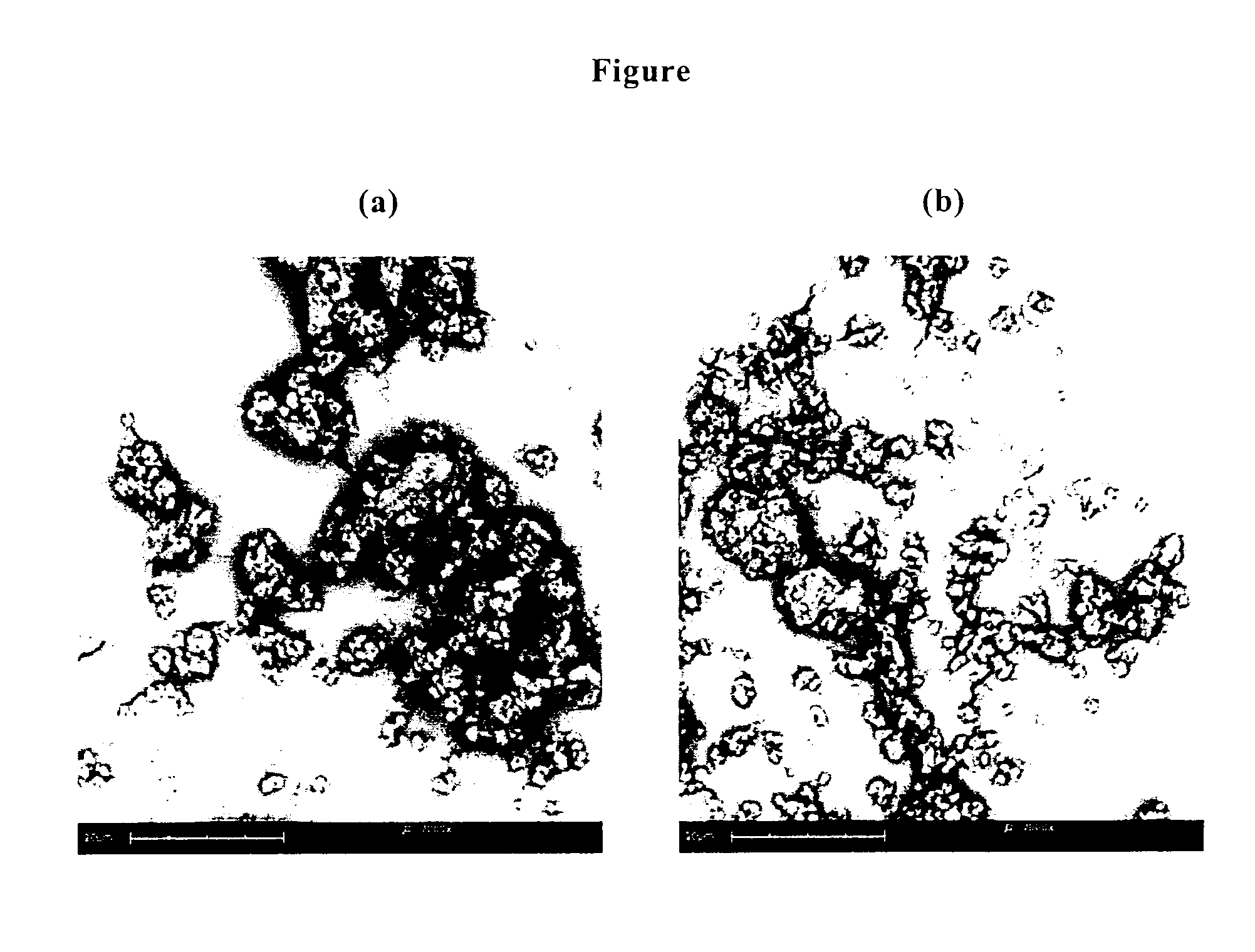Antibiotic microparticles for inhalation
a technology of antibiotic microparticles and inhalation, which is applied in the direction of antibacterial agents, drug compositions, biocides, etc., can solve the problems of inability to eradicate, decrease the water content of their secretions, and chronic colonization in most cf patients
- Summary
- Abstract
- Description
- Claims
- Application Information
AI Technical Summary
Benefits of technology
Problems solved by technology
Method used
Image
Examples
example 1
Preparation of Microparticles According to the Invention
[0110]Micronized tobramycin and various amounts of magnesium stearate at 0.5%, 1%, 5%, and 10% w / w are fed into the Nobilta® on Nanocular® driven vessel. The process was conducted at a batch size of approximately 40 ml for 10 and 20 minutes processing time at process rotation speed of 5000 rpm. The obtained mechano-fused microparticles were collected and subjected to technological and aerosol performances characterization. Similarly, microparticles with other antibiotics belonging to the class of aminoglycosides can be obtained.
example 2
Technological Characterization of the Microparticles of Example 1
[0111]The microparticles as obtained in Example 1 were subjected to the following analysis.
[0112]Scanning electron microscopy (SEM). Morphological properties were investigated using a scanning electron microscope (Phenom™, FEI Company, Hillsboro, Oreg.). Each sample was carefully mounted on a sample holder, so as to ensure representative images, and sputter coated with gold. SEM micrographs were taken using in-built image capture software. Representative pictures are reported in FIGS. (a) and 1(b). The particle size and the shape of the microparticles of the invention do not substantially change in comparison to tobramycin as such but a lesser number of loose agglomerates are present in the powder.
[0113]Densities and flow characteristics. Both density values were calculated by the method reported in the European Pharmacopeia. The poured density (dv) was measured by pouring samples slowly into a 10 ml calibrated measuri...
example 3
Aerosol Performances Characterization of the Microparticles of Example 1
[0117]The aerosol performance of the microparticles of the present invention were evaluated by laser diffraction (Spraytec, Malvern Instruments, Worcestershire, UK) equipped with an inhalation cell attachment. Approximate 30 mg (or 15 mg in later tests) of each powder was loaded into size 3 HPMC capsules (Capsugel, Peapack, N.J., USA). Before the aerosolization, a stainless steel pin punched each end of the capsule allowing powders to be released from the capsule by providing two holes with diameter about 1 mm. Each capsule was aerosolized using a Monodose inhaler device (Miat S.p.A., Milan, Italy) at flow rate of 60 and 90 L / min. All measurements were made on four replicates at room temperature (20° C., 50% RH). Each measurement was performed over 4 s.
[0118]The device retention was calculated as a percentage of powder left both in the capsules and in the inhalers to the total load. The fine particle fraction (F...
PUM
| Property | Measurement | Unit |
|---|---|---|
| Fraction | aaaaa | aaaaa |
| Fraction | aaaaa | aaaaa |
| Fraction | aaaaa | aaaaa |
Abstract
Description
Claims
Application Information
 Login to View More
Login to View More - R&D
- Intellectual Property
- Life Sciences
- Materials
- Tech Scout
- Unparalleled Data Quality
- Higher Quality Content
- 60% Fewer Hallucinations
Browse by: Latest US Patents, China's latest patents, Technical Efficacy Thesaurus, Application Domain, Technology Topic, Popular Technical Reports.
© 2025 PatSnap. All rights reserved.Legal|Privacy policy|Modern Slavery Act Transparency Statement|Sitemap|About US| Contact US: help@patsnap.com


